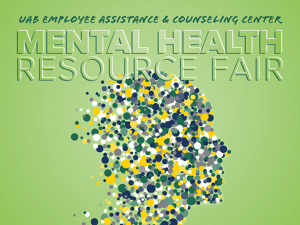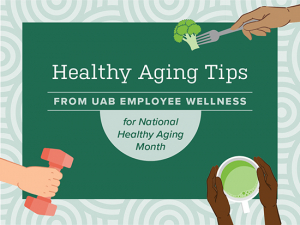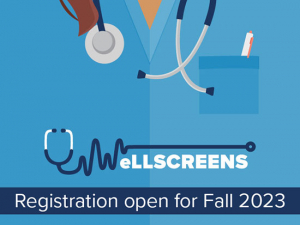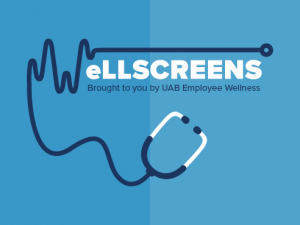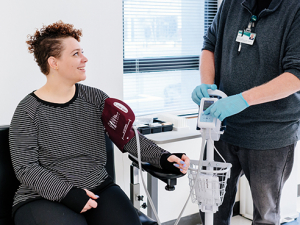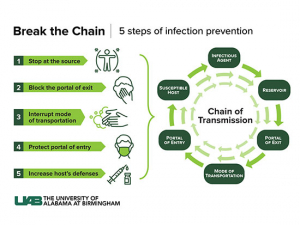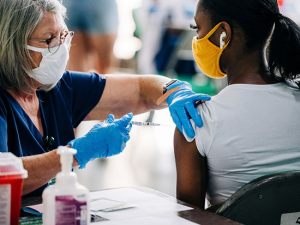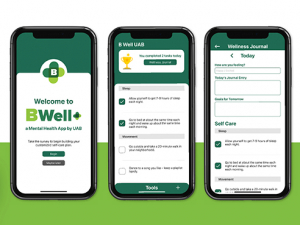 Monitor height, forearm placement, chair recline — learn the optimal way to set up your workstation in UAB's free Office Ergonomics Awareness Course.
Monitor height, forearm placement, chair recline — learn the optimal way to set up your workstation in UAB's free Office Ergonomics Awareness Course.
A little irritation goes a long way.
This is especially true from anyone engaged in repetitive activities — such as working on a computer all day. As a graphic makes clear in UAB’s Office Ergonomics Awareness Course, repetitive activities can irritate tendons, muscles and nerve tissue, leading to micro trauma or small tears. Trauma produces scar tissue, which attracts adhesions that sap flexibility, strength and normal function. It is called the cumulative trauma cycle.
The Office Ergonomics Awareness Course is brief, free and available anytime in UAB’s learning management system. Any UAB employee can learn about proper workplace setup and risk factors to avoid, and download a simple, visual checklist on how to identify and correct problems. For example, set up the top of your screen at eye level — lower for bifocal wearers — and arm’s length away, with your keyboard positioned at a height that places your forearms parallel to the floor. A separate slide illustrates how to set up your desk if using a laptop.
The course was created by the team in UAB Environmental Health and Safety, which also offers in-person consultations with departments and units on campus to review workstations and workspaces and provide recommendations on how to address any issues. “This is where training and conducting assessments can help us prevent these issues,” said Rob Emmons, director of Campus and Life Safety for the Environmental Health and Safety division.
In-person evaluations
Have you taken the online course and want more information or expert advice? Email Rob Emmons (remmons@uab.edu) or Vann Thursby (vthursby@uab.edu), manager of Campus Safety and Industrial Hygiene, to set up an on-location consultation.
Interrupting the cumulative trauma cycle
As the course explains, the cumulative trauma cycle can lead to one of several cumulative trauma disorders, including carpal tunnel syndrome, epicondylitis or tennis elbow, tendinitis, and bursitis. Top risk factors include awkward and/or prolonged positions including poor posture, repetition and lack of breaks, and direct pressure. Each of these can be found in any ordinary office.
So, which is the biggest offender Emmons sees? “It’s really a variety of things,” he said. Some common culprits:
- being stationary for too long
- overall placement of computer screen
- cluttered workspace
“Mostly it is about avoiding having to twist, bend over and turn a lot to do routine and daily tasks,” Emmons said. “Also, lighting in the environment should be sufficient so you don’t cause lots of strain on the eyes and so it doesn’t create additional hazards as a result of poor lighting.”
Top tips for office workers
Some of the course’s tips for office workers:
- frequently change posture to allow muscles to relax
- switch hands to perform tasks if possible
- if your job is highly mouse-intensive, try substituting keystrokes for mousing tasks (such as pressing Control and the P key to print)
Each of these tips “helps to break up the routine,” Emmons said. “You are using a different approach throughout the day, [which] allows you to refocus your eyes and/or use different parts of the hand or body to reduce the frequency of tasks.”
Email Rob Emmons (remmons@uab.edu) or Vann Thursby (vthursby@uab.edu), manager of Campus Safety and Industrial Hygiene, to set up an on-location consultation.




